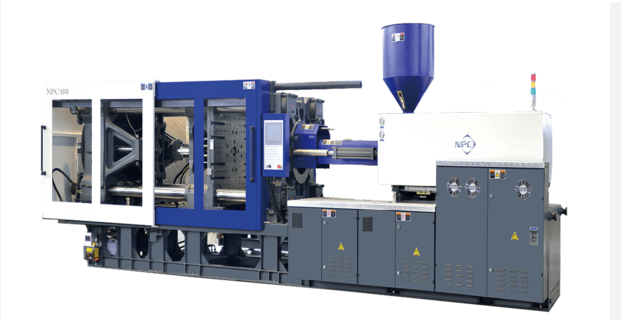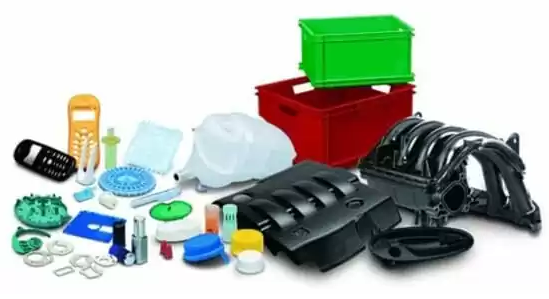The grade of ABS used for injection molding typically falls within the range of ABS grades suitable for molding processes.
ABS Varieties in Injection Molding
Characteristics of Common ABS Grades
Common ABS grades in injection molding are preferred for their balance of toughness, heat resistance, and cost-effectiveness.

Tensile Strength: Ranges from 25 to 50 MPa, making it versatile for various applications.
Impact Resistance: Offers an Izod impact strength of about 200-400 J/m.
Heat Resistance: These grades withstand temperatures up to 80-100°C.
Cost Factors: Average cost ranges from $1.50 to $2.50 per pound, varying by grade and volume.
Common ABS grades provide a reliable combination of mechanical properties and affordability, making them suitable for a wide range of applications.
Specialized ABS Grades for Specific Applications
Specialized ABS grades cater to specific industry needs, offering enhanced properties at different cost points.
High-Impact ABS: Features an Izod impact strength of up to 600 J/m, ideal for demanding applications like automotive parts.
Flame-Retardant ABS: Contains additives that ensure a UL 94 V-0 rating, essential for safety in electrical applications.
Transparent ABS: Balances clarity with a tensile strength of about 40 MPa, used in medical and consumer products.
Heat-Resistant ABS: Capable of withstanding temperatures up to 110-125°C, suitable for automotive and industrial components.
For a more in-depth exploration of ABS properties and applications, the Wikipedia page on ABS plastic provides extensive information.
Selecting the Right ABS Grade
Criteria for Choosing ABS Grades in Injection Molding
Choosing the appropriate ABS grade for an injection molding project involves several key factors:
Mechanical Requirements: Consider the tensile strength, which ranges from 25 to 50 MPa for standard grades, and up to 60 MPa for specialized high-impact grades.
Thermal Needs: Standard ABS can withstand 80-100°C, but for higher temperature applications, select heat-resistant grades withstanding up to 125°C.
Environmental Exposure: If the product will face outdoor exposure or chemical contact, opt for grades with enhanced UV stability and chemical resistance.
Regulatory Compliance: For medical or food-grade applications, select ABS grades that meet specific regulatory standards.
It’s crucial to match the ABS grade with the specific demands of the product, ensuring optimal performance and durability.
Cost and Performance Considerations
Balancing cost and performance is essential in material selection:
Budget Constraints: Standard ABS grades are more affordable, typically costing $1.50 to $2.50 per pound. Specialized grades, offering enhanced properties, can be more expensive.
Production Scale: For large-scale production, economies of scale can make higher-grade ABS more cost-effective despite their higher per-pound cost.
Long-Term Performance: Investing in a higher-grade ABS can reduce the need for replacements and maintenance, offering better long-term value.
Choosing the right grade involves a careful analysis of cost versus the performance benefits each grade offers in the context of the intended application.
For additional information on ABS plastics and their applications, consider visiting the Wikipedia page on ABS plastic.
Processing ABS in Injection Molding
Key Molding Parameters for ABS
Optimizing the injection molding process for ABS requires careful consideration of various parameters to ensure the quality and consistency of the final product.

Melt Temperature: ABS is typically processed at a melt temperature of 200°C to 250°C. This range ensures optimal flow without degrading the material.
Mold Temperature: Setting the mold temperature between 40°C and 80°C helps in achieving the desired surface finish and dimensional accuracy.
Injection Speed: A moderate to high injection speed is often recommended for ABS, usually around 40-70 mm/s, to fill the mold effectively while preventing defects.
Cooling Time: Sufficient cooling time, typically between 20 and 40 seconds, is crucial to ensure the product’s structural integrity and dimensional stability.
Adjusting these parameters is vital to maximize the efficiency and quality of ABS injection molding.
Enhancing Quality in ABS Products
Improving the quality of ABS products in injection molding involves several strategies:
Material Preparation: Pre-drying ABS material at around 80°C for 2-4 hours can prevent moisture-related defects.
Mold Design: Optimal mold design, including gate placement and venting, plays a significant role in preventing defects and ensuring uniformity.
Post-Processing: Techniques like sanding, painting, or chemical smoothing can enhance the aesthetic appeal and functional properties of ABS products.
Quality Control: Implementing rigorous quality control measures, including dimensional checks and strength testing, ensures the products meet the desired specifications.
Focusing on these aspects can significantly enhance the quality and performance of products made from ABS in injection molding processes.
For comprehensive information on injection molding and ABS processing, refer to the Wikipedia page on Injection Molding for a detailed overview.
Applications of ABS in Various Industries
ABS plastic, known for its strength, durability, and versatility, finds extensive use across various industries. The table below details its applications in the automotive, consumer electronics, medical, and construction sectors.
| Industry | Application | Properties Utilized | Benefits | Limitations |
|---|---|---|---|---|
| Automotive | Dashboard components, body parts | High impact resistance, durability | Improves safety and longevity of vehicle parts | Heat resistance can be a limitation for under-hood applications |
| Consumer Electronics | Enclosures for devices, keyboard keys | Good electrical insulation, aesthetic finish | Enhances product appearance and durability | Can be prone to scratches over time |
| Medical | Housings for medical devices, wearable devices | Biocompatibility, easy to sterilize | Ensures patient safety and equipment reliability | Limited use in high-temperature sterilization |
| Construction | Pipes, fittings, and fixtures | Toughness, resistance to wear and tear | Contributes to the durability of construction materials | Not suitable for outdoor applications without UV stabilization |
In each of these industries, ABS brings specific advantages like strength and aesthetic appeal, while considerations like heat resistance and UV stability need to be taken into account.
For more in-depth exploration of ABS plastic and its diverse applications, refer to the Wikipedia page on ABS plastic.




